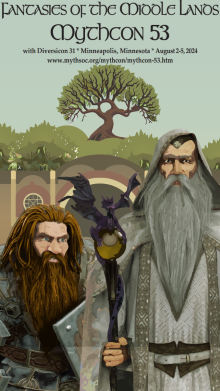Loading...
Location
Minneapolis, Minnesota
Document Type
Presentation
Event Website
https://www.mythsoc.org/mythcon/mythcon-53.htm
Start Date
5-8-2024 9:00 AM
End Date
5-8-2024 9:50 AM
Description
The French polymath René Girard presents a compelling argument that all desire is mimetic. According to Girard, we don’t actually know what we want; instead, we imitate the desires of others. This imitation is pervasive: children imitating their parents, athletes emulating their favorite sports stars, writers their favorite authors, and rivals mirroring each other. These models of desire act as mediators, indicating what objects or ways of being are worth pursuing. For Girard, desire exists in this middle place between a subject, a model, and an object. Thus, desire is interdividual. When the object of desire can be shared, mimetic desire leads to friendship. However, when the object cannot be shared, rivalry and violence inevitably ensue. Girard famously argues that all great literature leverages an awareness of mimetic dynamics; the greater the work, the more mimetically perspicacious the author. Given Girard’s theory, we would expect the greatest fantasy authors to erect their subcreative world with an intimate awareness of mimetic desire. When we turn to Lewis, this is exactly what we find. Lewis repeatedly explores this middle place of desire with mimetic characters like Edmund Pevensie, Orual, and the inner-circlehungry Studdocks. But perhaps Lewis’s most insightful exploration of this middle place of desire comes in the middle book of his Ransom trilogy. Perelandra presents a supposal of what might have happened in the garden of Eden when Satan tempted Eve, and Lewis envisions this event as inexorably mimetic. On unfallen Perelandra, the Unman takes up the mantle of the pander or go-between (the most powerful kind of mimetic model) to entice the green woman to break God’s one command. In this paper, I will argue that the Unman’s entire strategy rests on leveraging the power of mimetic desire and explore how Girard’s insights reveal Lewis’s take on Satanic deception.
Creative Commons License

This work is licensed under a Creative Commons Attribution-NonCommercial-No Derivative Works 4.0 International License.
Included in
The Middle-(un)man of Desire: A Girardian Reading of Lewis’s Perelandra
Minneapolis, Minnesota
The French polymath René Girard presents a compelling argument that all desire is mimetic. According to Girard, we don’t actually know what we want; instead, we imitate the desires of others. This imitation is pervasive: children imitating their parents, athletes emulating their favorite sports stars, writers their favorite authors, and rivals mirroring each other. These models of desire act as mediators, indicating what objects or ways of being are worth pursuing. For Girard, desire exists in this middle place between a subject, a model, and an object. Thus, desire is interdividual. When the object of desire can be shared, mimetic desire leads to friendship. However, when the object cannot be shared, rivalry and violence inevitably ensue. Girard famously argues that all great literature leverages an awareness of mimetic dynamics; the greater the work, the more mimetically perspicacious the author. Given Girard’s theory, we would expect the greatest fantasy authors to erect their subcreative world with an intimate awareness of mimetic desire. When we turn to Lewis, this is exactly what we find. Lewis repeatedly explores this middle place of desire with mimetic characters like Edmund Pevensie, Orual, and the inner-circlehungry Studdocks. But perhaps Lewis’s most insightful exploration of this middle place of desire comes in the middle book of his Ransom trilogy. Perelandra presents a supposal of what might have happened in the garden of Eden when Satan tempted Eve, and Lewis envisions this event as inexorably mimetic. On unfallen Perelandra, the Unman takes up the mantle of the pander or go-between (the most powerful kind of mimetic model) to entice the green woman to break God’s one command. In this paper, I will argue that the Unman’s entire strategy rests on leveraging the power of mimetic desire and explore how Girard’s insights reveal Lewis’s take on Satanic deception.
https://dc.swosu.edu/mythcon/mc53/schedule/55


